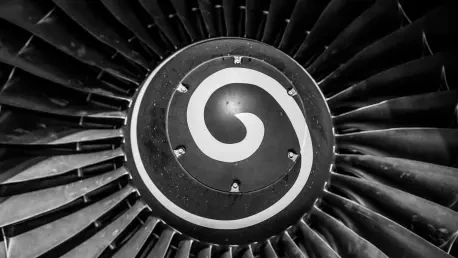Today, we’re thrilled to sit down with Kwame Zaire, a renowned expert in aerospace manufacturing with a deep focus on electronics, equipment, and production management. Kwame’s thought leadership in predictive maintenance, quality, and safety has made him a respected voice in the industry. In this conversation, we dive into the significance of a recent five-year contract between Godrej Aerospace and Safran Aircraft Engines for LEAP engine components, exploring its impact on India’s aerospace landscape, the technical intricacies of manufacturing complex parts, and what this partnership means for the global supply chain.
Can you shed some light on the recent five-year contract Godrej Aerospace secured with Safran Aircraft Engines?
Absolutely. This contract is a major milestone for Godrej Aerospace as they’ve committed to manufacturing titanium ventilation assemblies for the LEAP engine program over the next five years. These are highly specialized components critical to the engine’s performance, located within the main turbine shaft. It’s a testament to their engineering prowess and ability to meet the demanding standards of a global leader like Safran.
What specific role do these LEAP engine components play, and why are they so important in the aerospace sector?
The LEAP engines are a game-changer in commercial aviation, known for their fuel efficiency and cutting-edge design. The titanium ventilation assemblies Godrej is producing are integral to the engine’s operation, ensuring proper airflow and thermal regulation within the turbine shaft. These engines power popular narrow-body aircraft like the Airbus A320neo and Boeing 737 MAX, which are workhorses for airlines worldwide. Their widespread use makes the components incredibly significant.
Could you walk us through the manufacturing challenges involved in creating these titanium ventilation assemblies?
Manufacturing these parts is no small feat. It involves high-precision machining to achieve exact tolerances, advanced welding techniques to maintain structural integrity, and rigorous non-destructive testing to detect any flaws without damaging the component. Every step must align with stringent civil aviation standards, as even the smallest defect could have serious consequences. It’s a process that demands both technical expertise and meticulous attention to detail.
How does Godrej Aerospace ensure the quality of such complex components meets global standards?
Quality is non-negotiable in aerospace, and Godrej employs a multi-layered approach to ensure compliance. This includes state-of-the-art testing methods and strict quality control protocols throughout the production cycle. They also invest in training their workforce and adopting the latest technologies to maintain precision. It’s about creating a culture of excellence where every component is treated as mission-critical.
What does this contract signify for India’s position in the global aerospace supply chain?
This deal is a big win for India, showcasing its growing capability in high-end aerospace manufacturing. It highlights how Indian companies can produce complex, world-class components domestically, aligning with the ‘Make in India, for the world’ vision. Partnerships like this with global giants like Safran elevate India’s reputation as a reliable player in the international market, encouraging more foreign investment and collaboration.
Can you tell us more about Godrej Aerospace’s journey and expertise in this field?
Godrej Aerospace has been a key player in India’s aerospace ecosystem for over four decades. They’ve contributed to a wide range of programs across space, defense, and aviation, building a strong foundation in precision engineering. Their portfolio includes critical components for various high-stakes projects, which has honed their ability to tackle complex challenges. This long-standing experience is a big reason they’ve earned trust from partners like Safran.
How does this partnership strengthen the bond between Godrej Aerospace and Safran Aircraft Engines?
This collaboration reinforces a trusted relationship between the two companies. From Safran’s perspective, this contract is a strategic move to diversify their global supply chain while relying on Godrej’s proven capabilities. It’s not just about this one project; it builds a foundation for potential future collaborations, possibly on other programs or innovations, deepening ties over time.
What is your forecast for the future of India’s role in global aerospace manufacturing?
I’m very optimistic about India’s trajectory in this space. With contracts like this, we’re seeing a shift where India is becoming a hub for high-precision manufacturing. The combination of skilled talent, cost competitiveness, and a focus on quality positions India to take on a larger share of the global aerospace market. I believe we’ll see more partnerships and investments in the coming years, further solidifying India’s place in the industry.









